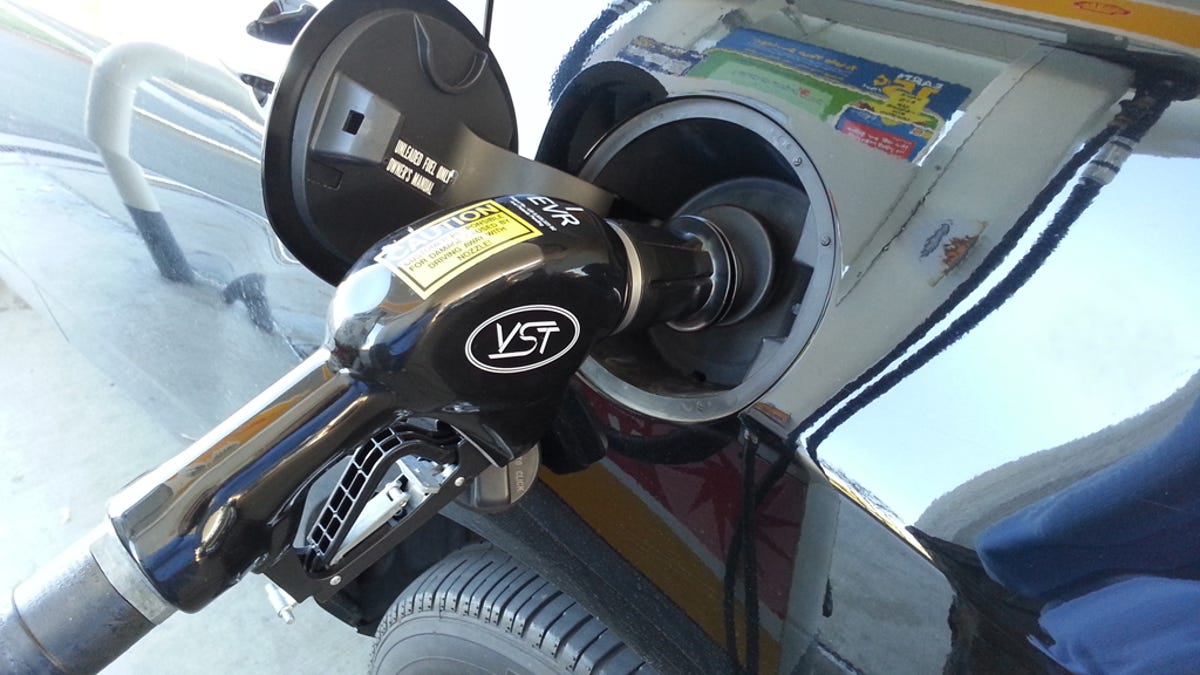How to get better gas mileage (and save a little time)
High gas prices show no signs of letting up anytime soon. Learn how to save some time and money with these fuel-related tips for your car.

The most recent gas prices report (January 22, 2013) from AAA wrote that the national average for a gallon of regular unleaded fuel is $3.31. The same report said annual household spending on gas in the United States in 2011 and 2012 was more than $4,000 each year. That's a lot of money any way you slice it.
Whether you've cut down on your driving, begun relying on public transportation, or even invested in a hybrid vehicle, there's still money to be saved by following just a few easy tips. We've put together a list of some fuel tips that should help you save both time and money.
Getting better gas mileage
Most of the old tips for getting better fuel economy still hold true today.
- Retire the lead foot. Drive at an easy pace and avoid unnecessary acceleration and braking.
- Reduce idling. Why waste gas when your car isn't even moving? If you're in the driveway waiting for someone to come out of the house, turn the engine off until everyone's in the car and ready to go.
- Replace or clean the air filter regularly. By some estimates, replacing a dirty air filter with a clean one can improve gas mileage by up to 10 percent, while also reclaiming lost horsepower. Check the manufacturer's recommendation on how often your car's air filter should be replaced and check to see if a reusable air filter makes sense for your vehicle.
- Tire pressure. Maintaining proper tire pressure not only promotes good fuel economy, but it also keeps your tires from wearing unevenly, thus keeping you from having to replace them prematurely. An underinflated or overinflated tire can also be a safety hazard.
For more driving tips for getting better fuel economy, check out CNET's Tips for getting better gas mileage.
Consider nitrogen for your tires
Have you ever noticed the blue or green valve stem covers on the tires of some cars? Those valve stem covers indicate that the tire's been filled with nitrogen and it lets technicians know not to mix it with compressed air. But what's the deal with nitrogen?
Nitrogen is becoming more popular as an alternative to using compressed air to fill tires. It maintains tire pressure better over time than compressed air. Many tire centers offer nitrogen for tires for about $6 per tire and will top it off, free of charge. Also, if you're a Costco member, all tires installed by Costco are filled with nitrogen. And in case you're wondering, a nitrogen-filled tire can be topped off with compressed air in a pinch, but you'll eventually want to get the tire purged, then refilled with nitrogen to achieve the optimal nitrogen purity ratio. If you're looking to maximize the retention of tire pressure, you may want to consider nitrogen. Just keep in mind that using nitrogen doesn't mean that you can ignore regular tire pressure checks.
Mobile fuel apps
Nitrogen isn't the only technology that can help you with your car's fuel economy. There are mobile apps available for your smartphone that help you do things, like finding the cheapest gas or tracking your gas mileage.
- Gas buddy is a crowdsourced mobile app that can help you find the cheapest gas in your area. It relies on its users to report gas prices and rewards points to those who contribute regularly. It's available on Android, iOS, and on the Web.
- Fuel Log is an Android app that can track your fuel economy and other useful statistics.
- aCar is another Android app that tracks fuel economy, as well as a plethora of other costs involved with your car, like parking and maintenance.
- If all you're looking for is a simple way to calculate gas mileage from your Windows PC, don't forget about the surprisingly versatile Windows Calculator.
Which side of the car is the gas cap located again?
If you've been driving the same car for years, you probably don't even think twice about where the gas cap is located anymore. But how about when you're driving your spouse's car or a rental? Before you stick your head out the window to see if you can spot the gas cap, try taking a look at the gas gauge on the instrument panel first. Many cars will display an arrow on the side of the gas gauge to indicate which side of the vehicle the gas cap is located. This often-overlooked feature might save you from pulling up to the wrong side of the fuel pump.
That's it. If you've got any other fuel tips, please share them with us in the comments!

